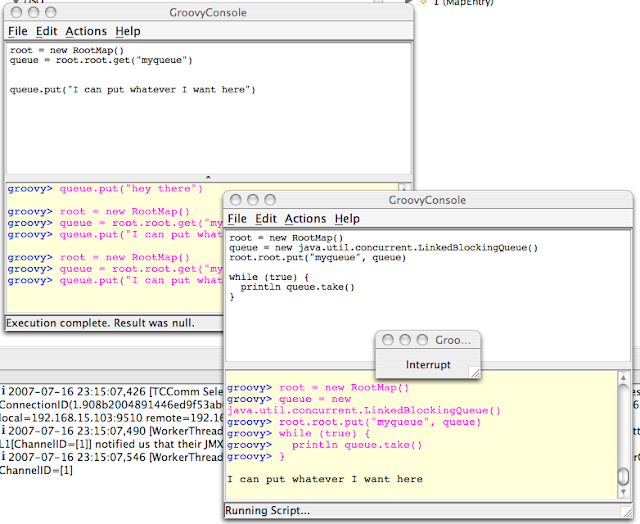IFoo or just Foo? Please stop naming interfaces IFoo.
I am not sure where the idea came from to name intefaces IFoo, but I think the practice is counter-intuitive and generally ugly. Java is not C++, nor C, and it most definitely is not Windows, so why do we have a good section of the Java community dead set on writing pre-historic looking code?
Aside from the aesthetic issues, which is important if you ask me -- code that looks funny most definitely smells funny, I believe naming an interface IFoo instead of Foo really misinterprets the fundamental idea of what an interface is.
An interface is an object - at least from the standpoint of the code that calls it. When you deal with it in code, there is no distinction between an interface and a full blown class. That, in my opinion is the beauty of Java. We can argue all day long about whether or not Java should have multiple-inheritance, the fact is that it does not. And in its place is a rather elegant solution - multiple interfaces.
My point is, when I instantiate FooImpl that implements Foo, for all intents and purposes, FooImpl is not a FooImpl, it is a Foo. If FooImpl happens to implement Bar, then it is also a Bar, but it most definitely is not an IFoo or an IBar.
To further belabor the point, calling your interface IFoo or IBar demotes the status of the interface, and the resulting "object" that is used by clients of the implementation of IFoo or IBar, thus subtly changing the way a programmer understands your code. It is as if the interface IFoo is second in nature to the implementation. But nothing could be further from the truth. Design by Contract means that you are coding to interfaces as first class citizens, not backwater denizens of the design. The implementation is what does NOT matter, and that's why you call it FooImpl, because you could have SuperDuperFooImpl and ReallyLameFooImpl too. The point is that any one of these is a Foo, and that's all your program should care about.
If you disagree with my opinion, look no further than Java Collections, do you implement an IMap or a Map? Josh Bloch had it right, so stop using IFoo already.
I am sure you'll still disagree with me, so flame on in the comments...
p.s. In the "nobody's perfect department", we even have examples in our own Terracotta code base.






